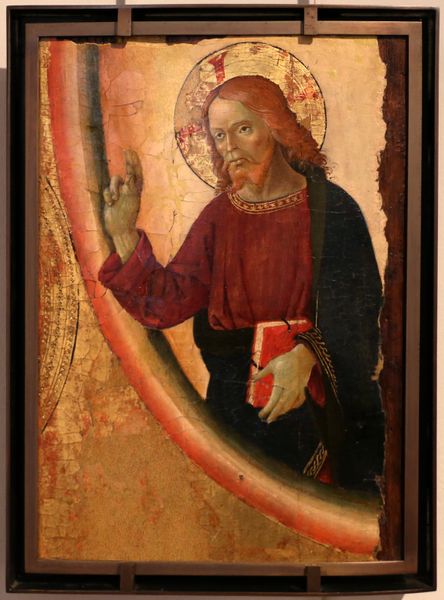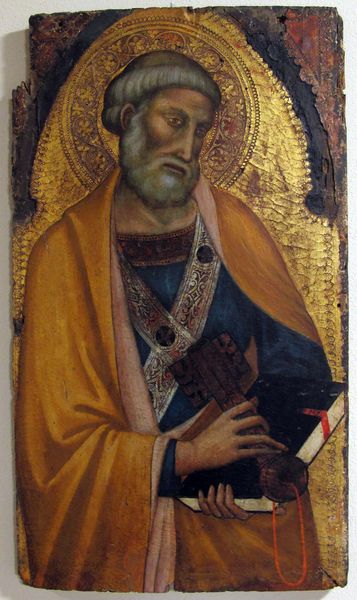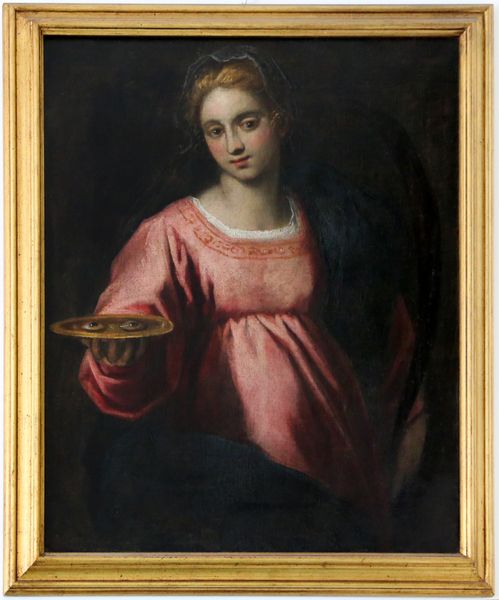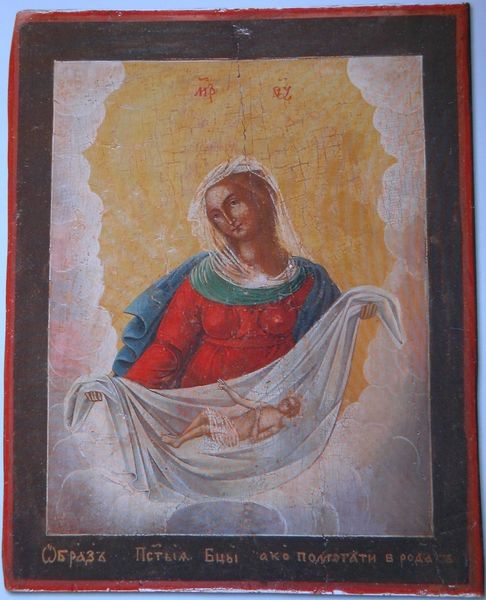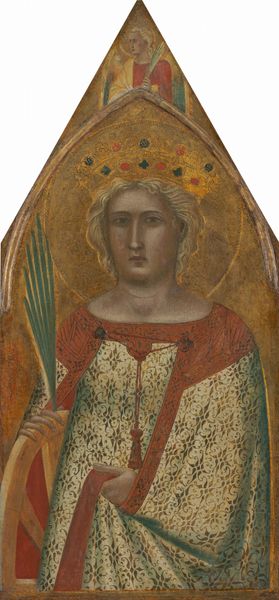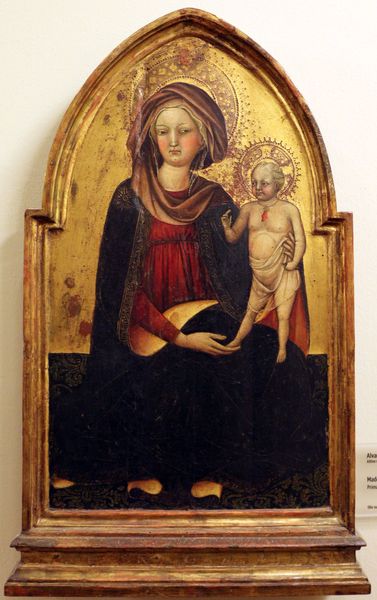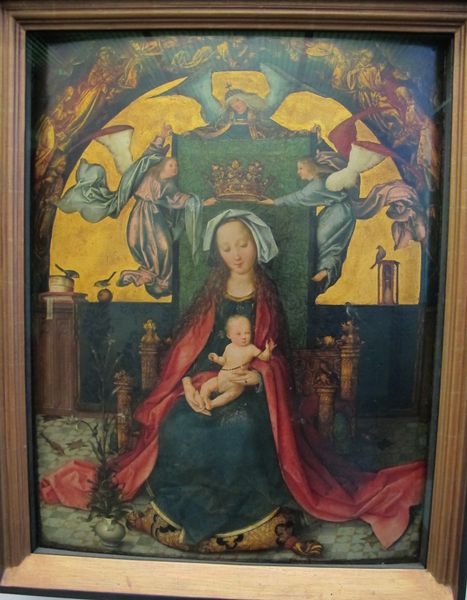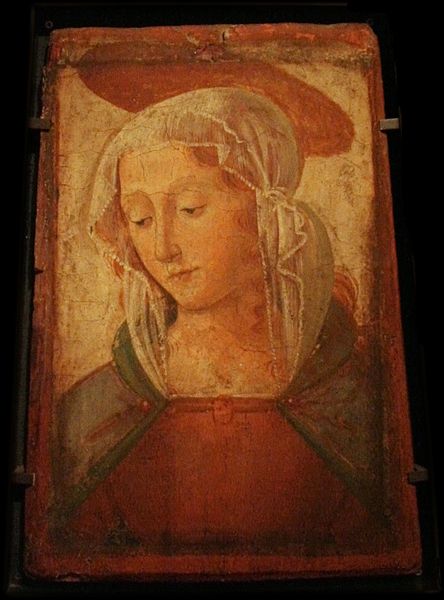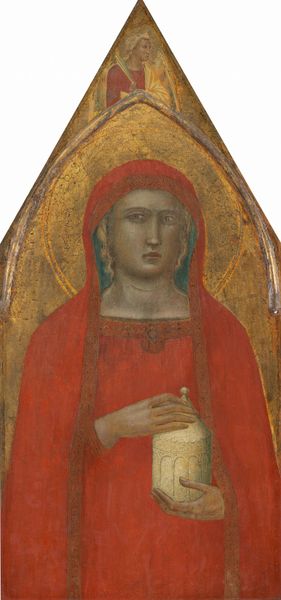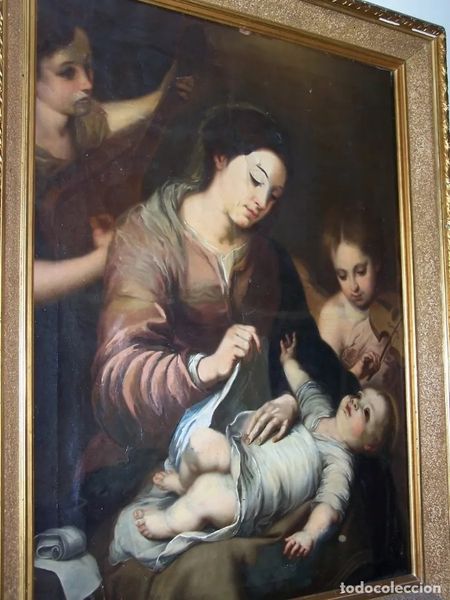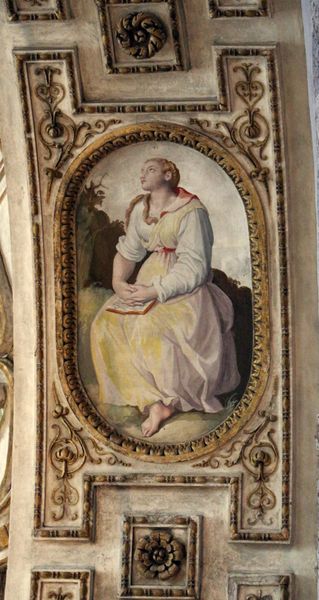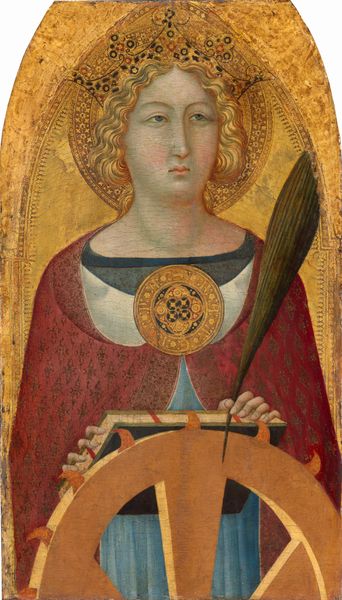
painting, oil-paint
#
portrait
#
painting
#
oil-paint
#
oil painting
#
history-painting
#
italian-renaissance
Copyright: Public domain
Curator: Let's turn our attention to this oil painting attributed to Luca di Tommè, "Roccalbegna, Oratorio Del Crocifisso." Editor: It strikes me immediately as unusually poised. The subject's calm, almost directorial gesture contrasts sharply with the burden of the cross she carries. There's a theatrical quality, isn't there? Curator: The subject, possibly Saint Helena, is represented with attributes tied to the narrative of finding the True Cross. She holds the cross and directs our attention outwards, breaking the fourth wall as it were. Considering the context of the Italian Renaissance, it's fascinating to consider the interplay between religious devotion, political power and female agency depicted here. Saint Helena, as the mother of Emperor Constantine, embodies a nexus of faith and imperial authority. How might her active engagement disrupt patriarchal power dynamics of the time? Editor: Absolutely. And if we consider the iconography, the halo is simple yet powerfully radiant, indicating holiness but not overwhelming the figure. Her gaze is knowing, challenging. Is she pointing to the path of salvation, or perhaps indicating where true power really lies? Curator: Power, I suspect, is a key element. The materials themselves – the oil paint, the canvas – signify wealth and status, revealing a commitment to displaying devotion publicly during a time of societal change and challenges to church authority. We could see in her expression perhaps a commentary of these themes. Editor: It also humanizes her, doesn't it? There's a certain intimacy in her gaze, almost like she’s sharing a secret with the viewer. What a brave artistic decision, to make divinity so relatable. Curator: Precisely. And to me, it invites viewers to consider not only her story but also the role that all women can play in shaping the narratives that shape our world. Editor: Ultimately, it’s a painting that continues to resonate because it invites contemplation. Curator: It invites debate. Thank you for walking us through that interpretation.
Comments
No comments
Be the first to comment and join the conversation on the ultimate creative platform.
